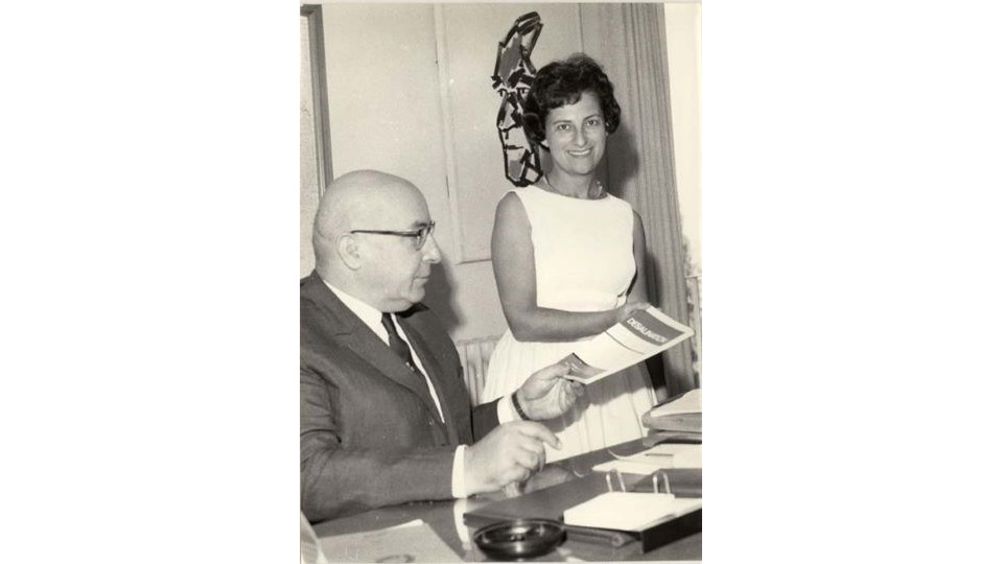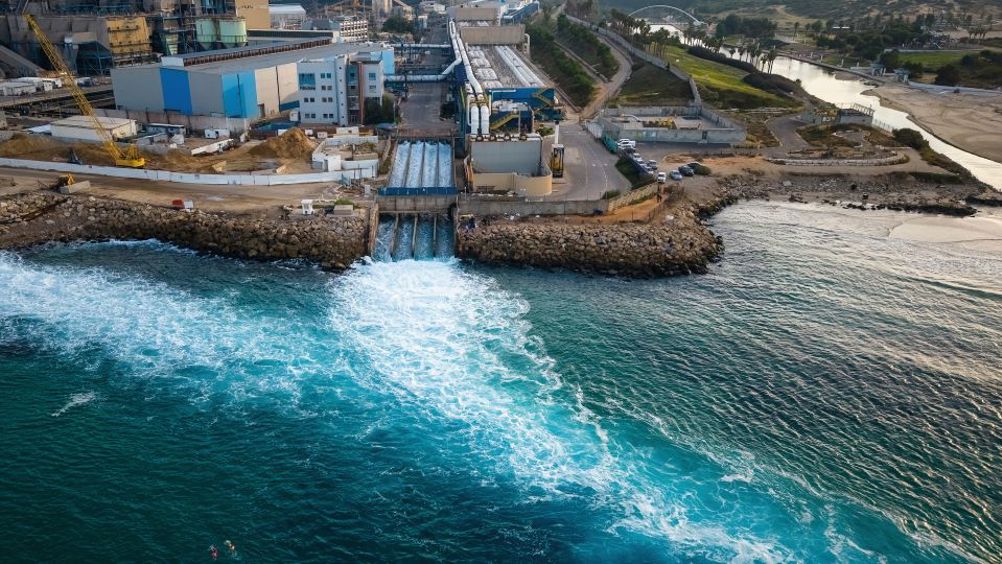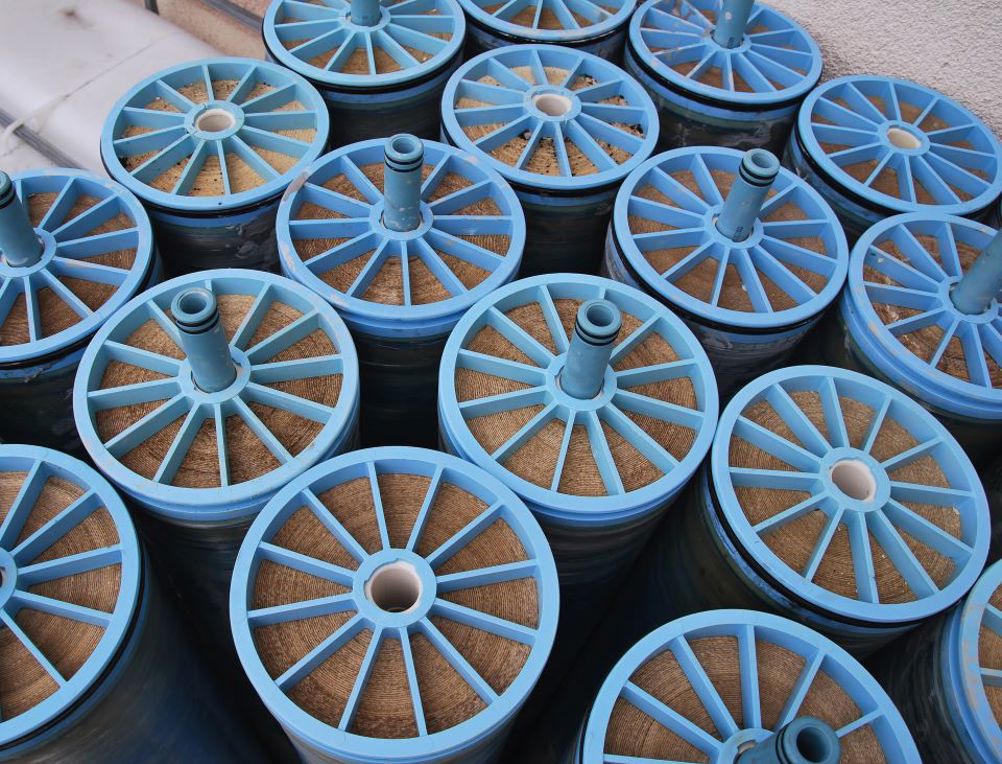Drought is nothing new – even in first world, affluent countries. In 1961, a severe water shortage began in the Northeastern United States continuing until the summer of 1966 and followed a decade of negligible rainfall in southern and western areas of the country.
Such events cause significant economic hardship – crops can’t grow and populations suffer in myriad ways from a limited supply of the most basic ingredient for life.
Significantly, it was in 1962 that German, French and British scientists were brought together by the German Society for Chemical Apparatus (DECHEMA) to discuss ideas on desalination and formed the Working Party on Freshwater from the Sea, and in 1965 the US Government Office of Saline Water had a significant conference to discuss desalination.
They included Robert Silver and Sidney Loeb whose work needed publishing but had no outlet until in 1965 Miriam Balaban volunteered to start a journal dedicated to desalination.
Born in the United States, Balaban had moved to Jerusalem shortly after graduating with a chemistry degree from the University of Pennsylvania and had built a career editing and publishing scientific journals. But her journal, Desalination, published in 1966, marked the beginning of a lifelong fascination.

Membrane technology
She explained: “The first volumes included the papers presented at the First International Meeting in Athens in 1966. Early desalination methods were just being initiated. One was the thermal method by Robert Silver and reverse osmosis by Sidney Loeb, one of the main founders of membrane technology.
“A big need for water was being recognized and so desalination became very important. It was a big resource and this was why it started to develop. Every year there are more people in the world – the need is becoming bigger and water scarcity and pollution are growing.”
While small scale desalination had been carrying on for millennia, it was time for commercialization to meet the demands Balaban identifies. In Saudi Arabia, the first thermal desalination plants were commissioned with continued investment through the 1970s.
Significantly, Israel, which has a 50% desert climate, was also extremely active in the early development of desalination technology.
Water needs
Loeb, together with Srinivasa Sourirajan at the University of California, Los Angeles, was developing reverse osmosis membrane technology that is predominant today. Then Loeb continued his work in Israel. Eventually the Israeli government backed the research and work on three large-scale desalination plants began, the first of which, Ashkelon, was completed in 2005.
Today, there are five facilities with a further two in development in Hadera and Ashdod which will combine to produce more than 90% of the country’s water needs.

Balaban explained: “Israel had been very active going back to the early 1960s and has built all over the world in places such as the Caribbean and the Canary Islands. Membrane is now the predominant technology. It is more affordable and more available and is taking over from thermal.”
The United States has not seen significant desalination development despite its worsening problems with the impact of drought and a growing population. The Carlsbad desalination project in San Diego County is the biggest in the western hemisphere producing three million gallons of drinking water a day but it is only recently that major investment has been announced in new projects.
“It’s interesting the States has not developed so much. California has an enormous seacoast.
The Carlsbad plant was built by Israel but is not as big as plants in Saudi Arabia, although it is a wonderful example of what can be done,” said Balaban.
Balaban has held her position with the European Desalination Society (EDS) since she founded it in 1993. She still bristles with excitement about continual innovation in a sector she has so successfully developed and promoted.
Brine mining
An example is brine mining which involves extracting minerals and rare metals from the waste brine produced in the desalination process.
These include sodium chloride and bromine as well as rubidium, cesium and, crucially, lithium with demand soaring thanks to batteries used in electric cars.
According to the International Desalination Association, the revenue from selling such commodities can offset the cost of water production, potentially allowing the production of ‘zero cost’ water.
Balaban said: “It’s a hot topic and I have organized conferences around it. For years it was considered a waste but now it’s of real value.”
Green hydrogen production is another growth area for desalination as demand for the fuel is anticipated to grow. It is produced through electrolysis with water molecules split into hydrogen and oxygen by an electrical current.
Ultrapure water
Ultrapure water is required and so reverse osmosis desalination technology naturally lends itself to its production. Green hydrogen production units will typically have a water treatment installation attached to them.
According to a recent report from management consultants Roland Berger, almost half of current green hydrogen projects will rely on desalination of seawater and significantly, the EDS has arranged an international conference – Desalination for the Green Hydrogen Economy – on 6 May this year in Egypt.
Such new technologies fascinate Balaban and she sees real progress in other areas such as solar powered desalination.
“Solar is important, particularly for small communities. You can have small units in remote areas where water is badly needed.”
That said, she does not believe climate change is a great mover in desalination. Above everything, it comes down to a need for water and there is no bigger driver for the industry.
“There is no question desalination is necessary and there are no big downsides. No other water sources are appearing and nobody is working on how we can drink less or wash less,” she said.
“We are going to have more people needing more water so we are in business!”

Awards to Miriam Balaban
2003: Honorary Member of the European Membrane Society
2008: Lifetime Achievement Award from the International Desalination Society
2012: Star of Italy from the President of Italy, Giorgio Napolitano
2014: Sidney Loeb Award from the European Desalination Society
2015: Balaban’s 50th Anniversary in the field of desalination (journals Desalination and Desalination and Water Treatment) Qingdao International Desalination Conference, China by the Desalination Branch of the China Water Enterprises Confederation
2016: Outstanding Lifetime Achievement Award from the Philadelphia High School for Girls
2016: 50th year of the journal Desalination dedicated to founding editor Balaban
2017: IDA Presidential Award – The Legend
2017: South Korea Distinguished Fellow for great contribution to the International Desalination Workshop (IDW) and world community
2019: Membrane Technology Award presented by the specialist group Membrane Technology of the International Water Association for life-long everlasting commitment to Education, Training and Research Dissemination
2022: University of Tunis Tel Manar for collaboration with the UTM for the development and dissemination of research on desalination and water treatment
2022: Saudi Saline Water Conversion Corporation in appreciation of lifelong contribution in desalination
2022: Ibn Tofail University, Morocco for lifetime dedication and collaboration in desalination
About the author
Andrew Smith is a freelance writer.
This article first appeared in the January/February 2024 issue of World Pumps magazine. To read the full issue, click here.







